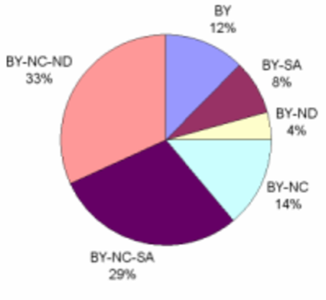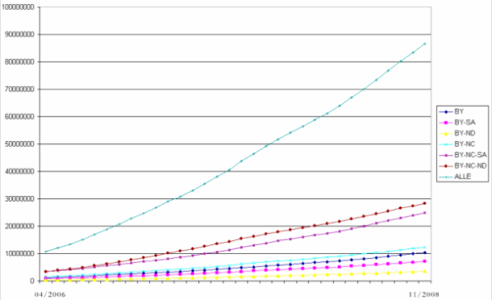Flickr now holds the world’s largest repository of Creative Commons-licensed images, but according to a new study, most Flickr users opt to license their images under the most restrictive CC license. Also, only a relatively small number of users (24%) allow commercial use of their images, and only about 12% of users choose the BY license, which allows for free sharing and remixing, as long as the author is attributed.

In total, Flickr now hosts over 100 million CC-licensed images, so even the least restrictive CC license accounts for a total of 12 million photos, and, of course, even the most restrictive CC license still allows for free sharing of the images, as long as the image is not changed and the author is attributed.
Derivative Works
While the highly restrictive BY-NC-ND license is the most popular CC license on Flickr (33%), the second most popular license (29%) is the BY-NC-SA license, which allows for derivative, non-commercial works, as long as the resulting work is licensed under the same license. In total, according to this study, about 63 million images on Flickr can be used for creating derivative works like films, photo montages, or animations.

Growth is Slowing
The growth rate for CC-licensed images on Flickr is slowing, however. The growth rate has slowed down from 13% in April 2006, to 4% in November 2008. Currently, the growth rate is holding stable at 4% per month.
Make Creative Commons Your Default on Flickr
If you want to make sure that all of your photos are covered under a Creative Commons license, just head to the Privacy & Permissionstab in your Flickr account settings, where you will find a Defaults for new uploads section. From there, you can change your default license. If you never changed it, it will currently mark all your new uploads as “all rights reserved.”
Note: If you want to “Rock Flickr Like a Champ,” have a look at this post.











